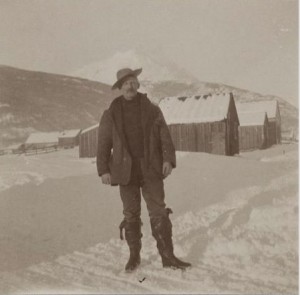
Mosier was born in 1866 in Des Moines Iowa. He attended Iowa State School of Engineering at age 16 and graduated in 1885 at age 19. He worked for railroads in Iowa until he moved to Seattle in 1888. The Seattle Lake Shore and Eastern hired him to work on the route near Snohomish. He went to Alaska in 1896 to report on a disputed waterway, but got involved with the gold rush and stayed, surveying from White Pass to Skagway, working for Captain Gaillard (who we looked at a couple of days ago).
The route that the White Pass & Yukon Route Railroad takes today is a result of his survey in 1897.
In 1898, Mosier went to Dawson by way of St. Michael and the Yukon and spent ten years in the Klondike and adjacent territories, making his mark as one of the most successful drift miners in the region.
He returned to Washington in early 1924 just before his wife died, and he never returned to Alaska. Albert was a U. S. Deputy Mineral Surveyor and a U. S. Deputy Surveyor in Alaska in 1914. He died on this day, December 8, 1955 in the town that he platted: Sedro Wooley, Washington.
Seen above in his 80’s still using his surveying equipment.
Skagit River Journal website; glosurveyorsnotes.pdf; webpage on him as Washington pioneer.






